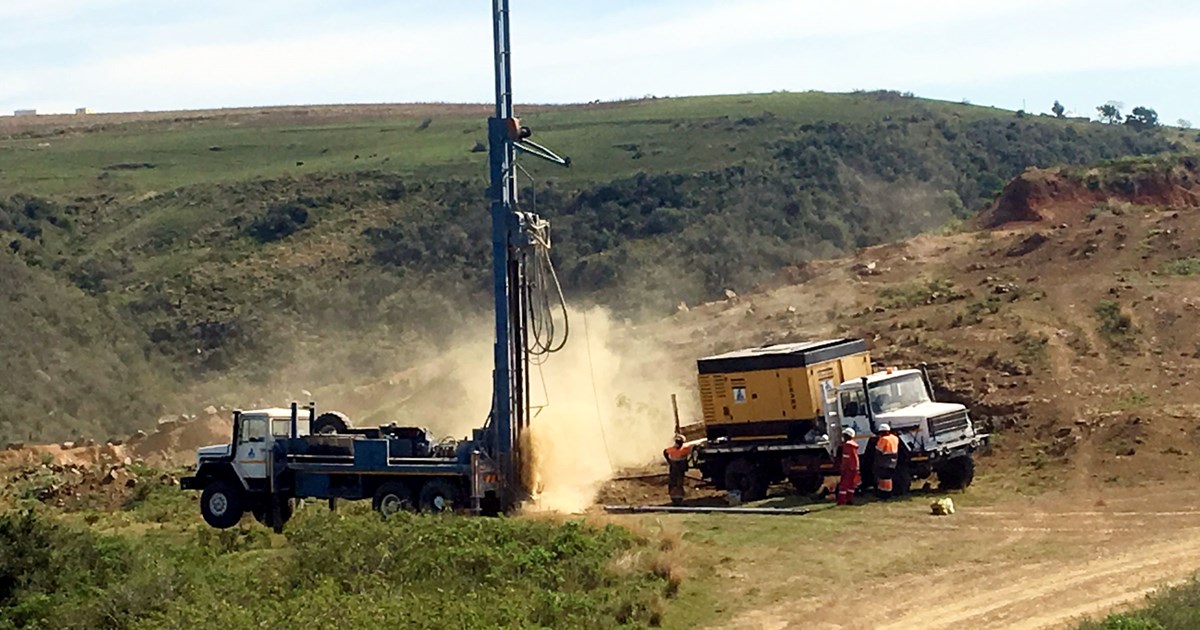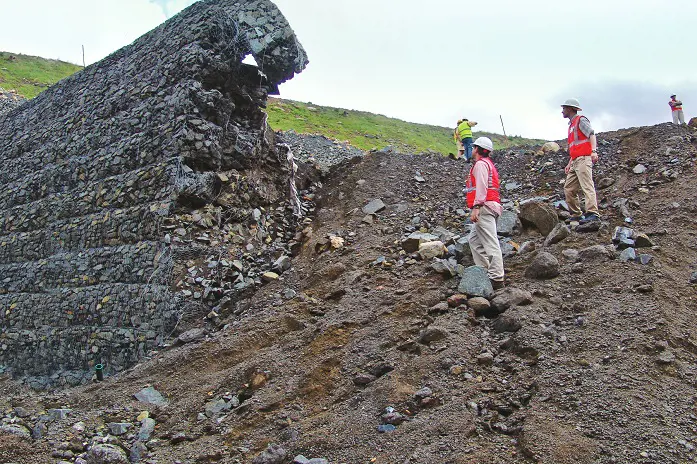Understanding the Principles: Regarding Geotechnical Engineering in Modern Construction
Understanding the Principles: Regarding Geotechnical Engineering in Modern Construction
Blog Article
The Value of Geotechnical Engineering in Attending To Environmental Difficulties and Enhancing Building And Construction Safety
Geotechnical design serves as a cornerstone in the intersection of ecological stewardship and building safety and security, offering critical insights right into the behavior of dirt and rock under various problems. By implementing calculated site examinations and tailored mitigation procedures, geotechnical designers play a crucial function in protecting both human lives and eco-friendly integrity.

Duty of Geotechnical Design
Geotechnical design plays an essential duty in the layout and building and construction of infrastructure by dealing with the behavior of dirt and rock products under numerous conditions. This field of engineering is vital for comprehending the interaction between frameworks and the ground, that includes figuring out the load-bearing capability of soil, evaluating stability, and forecasting possible settlement or failure.
Geotechnical designers are in charge of performing website examinations, which include sampling and screening dirt and rock to collect information on their physical and chemical residential properties. This information is important for designing structures, preserving walls, and various other earth-retaining structures that ensure safety and security and durability. Geotechnical design informs the selection of appropriate building and construction techniques and products, thus decreasing dangers associated with soil actions.
Additionally, the integration of geotechnical design principles right into urban preparation and ecological management is crucial for resolving obstacles such as ground contamination and groundwater monitoring. By comprehending geotechnical variables, engineers can establish sustainable remedies that enhance the strength of facilities versus natural dangers, while also promoting ecological stewardship. Ultimately, the role of geotechnical design is crucial for attaining risk-free, long lasting, and environmentally conscious construction practices.
Dirt Disintegration Mitigation
Dirt disintegration postures a substantial risk to both ecological security and facilities stability, affecting around 24 billion lots of productive soil shed yearly worldwide. This sensation is exacerbated by aspects such as deforestation, urbanization, and poor agricultural methods. Geotechnical design plays an essential duty in establishing reliable soil erosion reduction strategies that protect both the environment and construction tasks.
One method entails the implementation of disintegration control techniques such as plants planting, which supports soil through origin systems. Additionally, the construction of maintaining wall surfaces and terraces can properly reduce surface area overflow and safeguard susceptible locations from disintegration. Proper drainage style is additionally vital; it lessens water build-up and guides excess drainage away from critical frameworks.
In addition, geotechnical designers employ soil stablizing strategies, such as the application of geotextiles and biodegradable mats, to improve dirt cohesion and stop deterioration - about geotechnical engineering. Routine tracking and assessment of erosion-prone websites make it possible for timely treatments, ensuring long-lasting sustainability. By incorporating these approaches, geotechnical design not only mitigates the effects of soil disintegration yet likewise adds to the resilience of facilities versus environmental obstacles, eventually fostering a much safer and more lasting constructed setting
Groundwater Security Approaches
Groundwater offers as an essential resource for drinking water, agriculture, and commercial processes, making its defense necessary for ecological sustainability and public wellness. Efficient groundwater security methods are important in mitigating contamination threats and ensuring the long life of this source.

Routine tracking of groundwater top quality is additionally vital, making it possible for early detection of contamination resources and facilitating timely remediation initiatives. Employing innovative technologies, such as geophysical surveys and remote Read More Here noticing, aids in determining possible dangers to groundwater gets.
Additionally, public education and learning and stakeholder engagement are critical, cultivating community assistance for groundwater security initiatives. geotechnical specialist. By combining governing steps, technological improvements, and community participation, we can develop a his explanation thorough framework that safeguards groundwater sources while advertising sustainable growth and building and construction practices
Landslide Threat Management
Landslides present significant dangers to both human safety and security and facilities, making effective threat management strategies necessary. Geotechnical engineering plays a critical role in determining, examining, and mitigating landslide dangers. A detailed understanding of incline security, dirt mechanics, and hydrology is important for establishing efficient danger administration strategies.
The primary step in landslide threat administration includes detailed site investigations, which consist of geological mapping and soil testing. These investigations aid designers examine the capacity for landslides by recognizing vital factors such as incline angles, soil structure, and water content. Making use of advanced technologies such as remote picking up and geophysical surveys can boost the precision of these evaluations.
Once risks are determined, ideal mitigation steps can be executed. These might consist of design options such as maintaining wall surfaces, drainage systems, and slope stablizing strategies. Furthermore, keeping track of systems must be developed to identify indications of ground motion and adjustments in water levels, enabling positive treatments.

Enhancing Building And Construction Safety
Building and construction sites often provide a myriad of risks that can endanger employee security and task integrity. Geotechnical engineering plays a crucial function in enhancing construction security by supplying important understandings right into subsurface problems. Via extensive soil and rock evaluation, geotechnical designers can identify possible risks, such as dirt instability, groundwater issues, and seismic susceptabilities, which might jeopardize the safety and security of building activities.
Applying geotechnical services, such as correct foundation layout and the use of maintaining structures, mitigates these threats dramatically. These services not only ensure the security of the frameworks being built yet also produce a more secure working environment for construction personnel.
Additionally, cultivating a society of safety and security through training and adherence to established security procedures better enhances building and construction site security. By incorporating geotechnical expertise into the preparation and implementation phases, building and construction projects can achieve higher safety requirements, ultimately shielding employees and guaranteeing effective job completion.
Conclusion
In final thought, geotechnical engineering offers as a vital self-control in advertising and tackling ecological challenges construction security. Via efficient soil erosion mitigation, groundwater protection strategies, and landslide danger monitoring, geotechnical designers contribute to the growth of resilient framework.
Geotechnical design serves as a cornerstone in the crossway of environmental stewardship and building security, providing crucial understandings right into the behavior of soil and rock under numerous problems. Geotechnical engineering educates the selection of suitable building and construction approaches and materials, thereby minimizing dangers linked with soil habits.
Geotechnical design plays a crucial role in creating efficient dirt erosion mitigation approaches that protect both the setting and construction projects.
Moreover, geotechnical designers employ soil stabilization methods, such as the application of geotextiles and naturally degradable mats, to boost dirt communication and protect against deterioration. Via extensive dirt and rock analysis, geotechnical designers can determine potential risks, such as dirt instability, groundwater issues, and seismic vulnerabilities, which might compromise the safety of building and construction activities.
Report this page